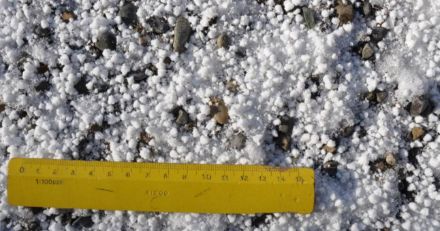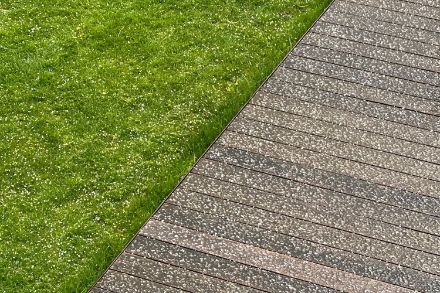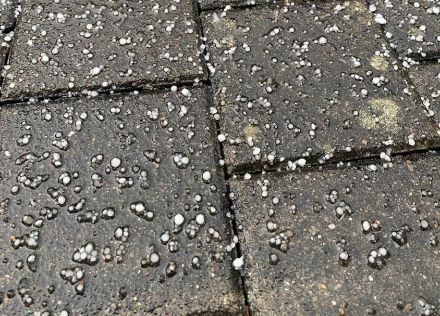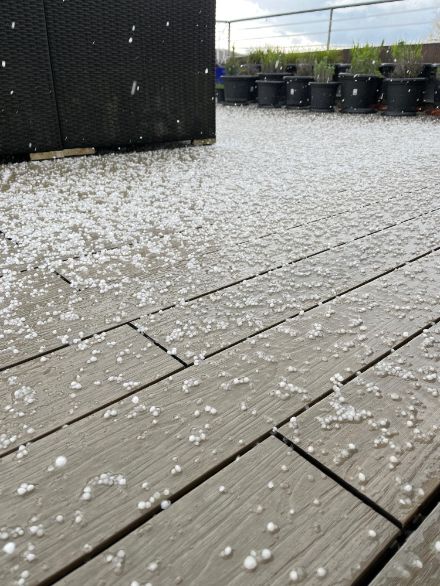Service Navigation
Search
Appearance and occurrence
Graupel is a type of precipitation that occurs in solid form. It consists of small, white, globular ice pellets with a diameter of between 1 and 5 mm.
There are two similar types of precipitation that contain ice pellets:
- Graupel consists of opaque, white pellets that look similar to snow. The pellets can be pressed together easily. They often break apart when they hit a hard surface. Graupel occurs in winter at temperatures below zero degrees.
- Sleet has an opaque core surrounded by a clear layer of ice, making it semi-transparent. The pellets cannot be pressed together very easily. Sleet is often wet, as it usually falls in temperatures above zero. It is most often seen in the spring.



How are graupel and sleet formed?
Graupel falls from storm clouds or large cumulus clouds. It is a convective type of precipitation and occurs only in short showers.
In convective clouds, water is usually present in a few different forms: liquid, solid and supercooled, i.e. liquid water that is below zero degrees Celsius. Graupel is formed by supercooled water freezing onto (partially melted) snowflakes or ice crystals.
How to tell the difference from other forms of precipitation
Graupel (small, soft ice pellets) is often confused with snow. This is not surprising, since graupel resembles snow and often falls at the same time as it. The main difference lies in their shape: Graupel takes the form of round pellets, while snow falls in the form of ice crystals or irregularly shaped snowflakes. However, there are also snowflakes that consist of both ice crystals and graupel. And there are differences in how they are formed: Graupel only forms in convective clouds, while snow can fall from various cloud types.
Sleet, on the other hand, is often mistaken for hail. The key difference here is the size. By definition, hail must have a diameter of at least 5 mm. If sleet pellets in a thundercloud have enough time to grow, they can turn into hail. Because they are smaller, sleet pellets do not cause damage.
Both types of pellets can also melt on their way down, resulting in rain by the time they reach the ground.
